National Leaders of Color Fellowship
Introduction
The Fellowship takes place completely online from late fall through early summer. During this no-cost eight-month fellowship, fellows receive access to specialists in the field, strategic learning objectives determined to deepen thought on anti-racist and culturally-oriented leadership practices, and national-level network and cohort building. Upon completion of the program, participants transition to alumni and have opportunities to collaborate with the USRAO in their region as advisors, funding panelists, and/or other professional capacities.
The 2024-2025 application period for Mid Atlantic Region Fellows closed on Sunday, October 13, 2024.
2024-2025 Mid Atlantic Fellows
The 2024-2025 cohort of the National Leaders of Color Fellowship (LoCF) program represents 56 leaders from across the United States. The cohort will participate in a strategic leadership development program for Black, Indigenous, and people of color (BIPOC) leaders committed to the advancement of cultural equity in the arts that emphasizes policy and data in the arts, leadership, culture of care, and strategic foresight through an advocacy lens.
We invite you to meet the nine 2024-2025 Fellows from the Mid Atlantic Arts region.
Maglyn Bertrand, District of Columbia
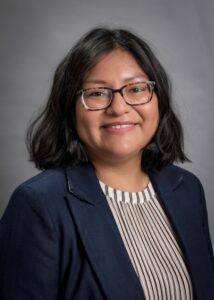
Display caption
Image: Maglyn Bertrand.Maglyn
Maglyn Bertrand is an arts administrator shaped by 29 years of participation in music and training as an ethnomusicologist. Before working in cultural institutions, Maglyn sang in tango music and nueva canción ensembles and researched Indigenous South American singers creating new forms of popular music to protest political corruption and ethnic discrimination, and the use of live and recorded sound in museum exhibitions featuring artists of color. She is a graduate of Emory University (BA in Music and Latin American and Caribbean Studies, summa cum laude), UC Berkeley (MA in Ethnomusicology), and NYU (MA in Latin American and Caribbean Studies; Advanced Certificate in Museum Studies).
Maglyn is the Grants Manager at The Phillips Collection in DC. In this role, she writes grant proposals requesting support for the museum’s exhibitions, educational programs, DEAI initiatives, and more. Previously, she helped create educational and public programs at Flushing Town Hall and The Louis Armstrong House Museum, each dedicated to serving the multicultural communities of Queens. These experiences, as well as her Latina identity and Indigenous heritage, have made her passionate about increasing awareness of the diversity of Latine/x individuals and cultures that enrich the arts world, and supporting people of color-led arts organizations.
Celestina Billington, New York
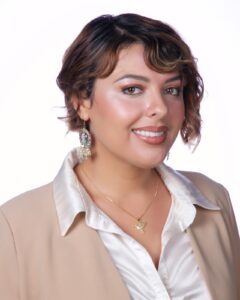
Display caption
Image: Celestina Billington.
Celestina Billington is a New York-based multidisciplinary artist, activist, producer, and arts administrator with an international portfolio. Currently, she serves as an Arts Programs & Events Coordinator in Long Island’s North Fork. She holds an MA in Arts Administration from Columbia University, Teacher’s College. With recognition from the National Endowment of the Arts, the NYC Department of Cultural Affairs, and exhibition credits around the world, she has over ten years of notable experience in the field. Her projects seek to connect diverse communities to exciting exploratory artworks. Her work is imbued with inclusivity, thoughtfulness, & an ongoing commitment to equity. From Texas, Celestina has mixed race ancestry and identifies as “Tejana.”
Zach Blackwood, Pennsylvania
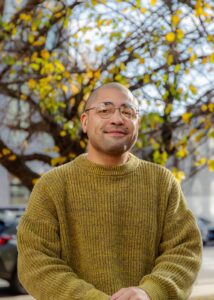
Display caption
Image: Zach Blackwood.
Zach Blackwood is an arts administrator and writer based in Philadelphia, known for his work in social practice performance production and arts philanthropy. From 2017 to 2021, he worked at FringeArts, producing the curated slate of performances in each year’s Philadelphia Fringe Festival. In addition, he launched three new performing arts verticals for the institution: Blue Heaven Comedy Festival, Hand to Hand Circus and High Pressure Fire Service, an incubator for new theatrical works by Philadelphia-based artists.
Since 2021, he has served as a Program Officer at the Pew Center for Arts and Heritage. The Pew Center is a multidisciplinary arts and culture grantmaker contributing $10 million dollars to the five-county region each year. As Program Officer for Community Connection and Audience Participation, the bulk of his role is dedicated to advising arts organizations as they seek to build or expand relationships across historically marginalized communities.
In addition to his work as an arts administrator, Zach Blackwood is the author of two chapbooks: ultra-fine out now from Blush Lit and the apocryphal reality TV workbook, SEXY UNIQUE HOLLOW POINT from Glo Worm Press. In his leisure time, Blackwood enjoys 1:24-scale miniatures and his hound dog, Hammer.
Lisa Brown, Maryland
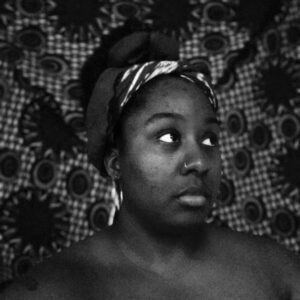
Display caption
Image: Lisa Brown.
Lisa’s journey into photography was inspired by her grandfather’s captivating street photography and her early fascination with the darkroom, where she discovered the magic of light shaping stories. Over time, her practice expanded to include sculpture and ethnographic approaches, enabling her to connect with communities and honor their narratives. From documenting the lives of women in Baltimore’s prisons to capturing the spirit of children in Ghana’s northern regions, Lisa’s work amplifies voices often overlooked and celebrates cultural resilience.
Currently pursuing an MFA in Community Arts at the Maryland Institute College of Art, Lisa combines her academic pursuits with fieldwork and mentorship. Her contributions have been recognized by institutions such as the Pittsburgh Art Society and Dayton Art Institute. She has also been supported by transformative fellowships, including mentorship under Titus Brooks Heagins, which have guided her in navigating the art world while deepening her practice.
Lisa’s work centers on the idea of healing—both individual and collective. Through her lens and her hands, she bridges cultural and generational gaps, exploring shared human experiences. Heal Her Photography represents her commitment to capturing and honoring stories that inspire connection, understanding, and transformation.
Anne Choi, New Jersey
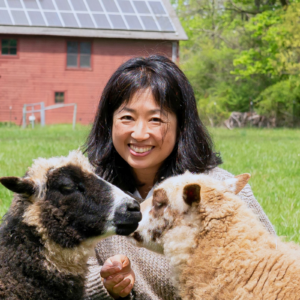
Display caption
Image: Anne Choi.
Anne Choi is a fiber artist raising a small flock of Shetland sheep in Bedminster, NJ. She is the owner of Middlebrook Fiberworks, offering small-batch, custom milled yarns made from the wool of her sheep. She teaches weaving, spinning, and dyeing for regional fiber arts guilds, museums, and fiber festivals. Her workshops center the global heritage of textile handicrafts that precede colonization, and honor the cultural legacy of traditional artisans. Her teaching focuses on using natural, biodegradable materials and ecologically sustainable practices. Anne is the founder and executive director of NJ Fibershed, a 501(c)(3) nonprofit educational organization dedicated to nurturing a diverse and equitable community of fiber producers and crafters interested in sustainable textile arts. Through public programs and events, NJ Fibershed provides connections and support particularly for current and aspiring first-generation farmers within New Jersey.
Maria Roberta Duarte Miranda, Puerto Rico
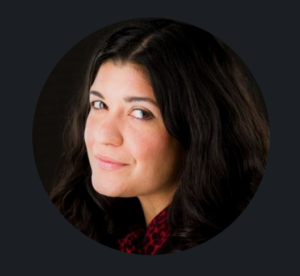
Display caption
Image: Maria Roberta Duarte Miranda.
Roberta’s diverse career spans strategic venture development, arts in medicine, and transformative leadership. She has championed the integration of arts and culture into community engagement, serving on leadership boards such as the Young Latino Network, Greater Cleveland Regional Transit Authority, Canalway Partners, and LatinUs Theater Co. A proud Mount Holyoke College alumna, Roberta has been recognized as a Crain’s Cleveland 40 Under 40 honoree and has completed prestigious programs, including VC University and Cleveland Bridge Builders.
Guided by her multicultural roots, Roberta views art as a catalyst for meaningful social change. Her vision is to establish El Barrio Fest as a global platform for creative collaboration and community-driven transformation.
O’Dani Evans, U.S. Virgin Islands
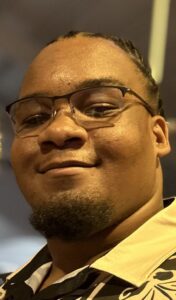
Display caption
Image: O’Dani Evans.
O’Dani Evans is the media outreach director for the non-profit organization Lion Haven USVI. Graduating from the University of the Virgin Islands in 2018 with a bachelor’s in English. His work focuses on empowering at-risk youth in self-expression and self-discovery through the arts and sports and supporting students. As a born and raised Crucian, creating an impact through the blending of modern advances and historical culture is the linchpin of his work. He has had the honor of working with esteemed members of local art & youth programs such as YWAM & Island Therapy to find new ways to reach beyond the titles forced upon locals and showcase their individuality. Through initiatives like Keepin it Crucian, a series highlighting Virgin Island poets, musicians, and changemakers, and programs supporting seniors, O’Dani defies societal norms and celebrates local diversity. His body of work exemplifies the power of community, leadership, and the arts to bring about meaningful change.
Shawné Michaelain Holloway, Virginia
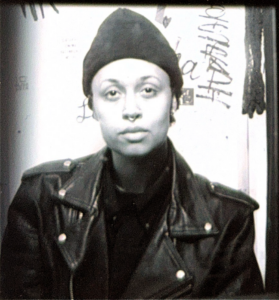
Display caption
Image: Shawné Michaelain Holloway.
SHAWNÉ MICHAELAIN HOLLOWAY is a new media artist. She is currently the executive director of Netizen.org and an Assistant Professor of Kinetic Imaging at Virginia Commonwealth University. Her 11 years of leadership experience in the arts ranges from organizing noisy DIY electronics performances, to presenting solo exhibitions at institutions like Performance Space New York and managing and developing back-end systems for the artists’ library-archive Black Lunch Table. Through her interdisciplinary work she invests in researching and honoring Black and LGBTQIA+ legacies and creates sustainable structures for equitable innovation of software for experimental digital arts practice. Programming she currently leads includes The P.A.T.C.H. (Providing Accessible Tech Community Histories) Clinic and The Media Arts Educators Exchange Group.
HOLLOWAY lives between Richmond, Virginia and Chicago, Illinois and supports organizations like The Processing Foundation, where she was a 2024 Fellowship Mentor, and the Clinic for Open Source Arts, where she co-founded the Open Source Arts Contributor’s Conference and Community Leaders Program. She is an alumnus of Shimer College, The School of the Art Institute of Chicago (BFA, Fine Arts) and Parsons Paris (MFA, Design and Technology.) Outside of work, she is a dedicated fencer and a lover of fancy sweets.
Jamila Jones, West Virginia
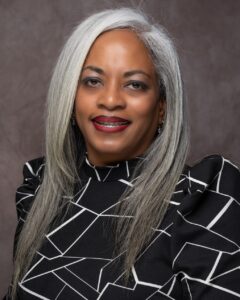
Display caption
Image: Jamila Jones.
An Appalachian Regional Commission ALI alumnus, Jamila Jones is a passionate advocate for cultural preservation, community empowerment, and inclusive economic development. Rooted in their commitment to bridging heritage and progress, Jamila has spearheaded transformative projects, including the Affrilachian Trail initiative, which integrates African American cultural preservation, sustainable tourism, and workforce development into a scalable, multistate model.
At the heart of the Affrilachian Trail is the historic Weaver-Gillison House in Harpers Ferry, West Virginia, which serves as the trailhead for this ambitious initiative. By preserving this African American heritage site and fostering a tourism ecosystem, the project exemplifies the power of local action to drive regional impact. Through strategic partnerships and frameworks like Wealth Works value chain development, the initiative not only highlights underrepresented cultural assets but also creates economic opportunities for marginalized communities across Appalachia.
By embedding workforce development components into the project, Jamila is cultivating the next generation of preservationists and engineers, while fostering cross-state collaboration to strengthen community resilience. With a focus on equity, education, and empowerment, Jamila continues to champion initiatives that reflect the rich cultural diversity and potential of Appalachia, advancing a shared vision for a more inclusive and sustainable future.
AliShah Watson, Delaware
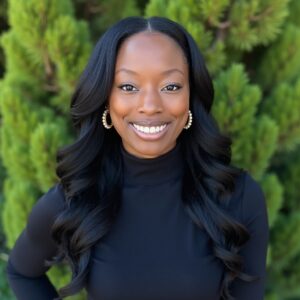
Display caption
Image: AliShah Watson.
AliShah Watson, an educator and cultural advocate, is dedicated to uplifting communities through culturally centered, transformative programming. As the founder and Executive Director of Culture Restoration Project, Inc., she leads an African-centered arts and culture nonprofit serving nearly 500 youth annually. The organization focuses on fostering positive self-identification and cultural pride.
A graduate of the University of Delaware, Watson holds Bachelor’s Degrees in Africana Studies and English-Ethnic & Cultural Studies. Her academic foundation informs her work, blending scholarly insight with practical, community initiatives. Under her leadership, the acclaimed Beyond Those Bars program uses hip-hop as a vehicle to develop character, cultural awareness, and self-empowerment. By integrating African-centered values, it equips youth with the tools to navigate societal challenges, build confidence, and achieve academic and personal success. Another program, Knowledge of Self, inspires self-awareness and community engagement by connecting students to their heritage while addressing systemic inequality.
Watson contributed to Delaware’s HB 198, mandating Black History curricula in K–12 schools, and previously served on the University of Delaware’s Africana Studies Advisory Board. Recognized with the 2024 HER Legacy Award and the Delaware Business Times 40 Under 40 honor, Watson continues to drive lasting change through education, arts, and cultural advocacy.
Previous Fellows
2023-2024 Mid Atlantic Fellows
2022-2023 Mid Atlantic Fellows
Fellow Spotlight
Annie Y. Saldaña Leads the Museo de Arte de Puerto Rico’s (MAPR) Creative Community Development Center Initiative
*Desplácese hacia abajo para ver la versión en español.
By Mackenzie Kwok
This month, the Museo de Arte de Puerto Rico (MAPR) announced the Creative Community Development Center (CEDE) initiative. Led by 2023 Leaders of Color Fellow, Annie Y. Saldaña, CEDE offers professional training, artist-in-residence programs, and mentoring services to support Puerto Rico’s creative communities.
We spoke with Saldaña about her work and the CEDE initiative.
Can you tell me a little bit about the background of the creative Community Development Center and it’s creation?
In 2006, the museum designed a program that was called the Artist Assistance Program. For many years, it served as a unique department that supported visual artists through capacity building and opportunities to make their work visible. This department has been on hiatus for the past few years.
When the museum’s new director, Maria C. Gaztambide, arrived in April, she sat down and met with everybody that worked at the museum. She saw that I worked as the Education Coordinator for different proposals and projects, and supported artists outside of the museum through exhibition making, or writing about artists’ work. She asked if I wanted to reactivate this Artist Assistance Program and redesign it. Instead of only supporting visual artists through capacity building, we wanted to support art administrators, freelance curators, educators, and everybody that is a part of the creative ecosystem.
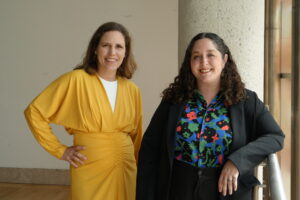
Display caption
Image: María C. Gaztambide and Annie Y. Saldaña. Credit: Courtesy Annie Y. Saldaña.
Why was this important to you?
As both an artist and arts administrator, I have seen the need for this service in Puerto Rico. I have had to leave the island to pursue professional development or capacity building opportunities. I’ve seen artists and colleagues travel outside Puerto Rico to do different kinds of workshops and attend professional development seminars. There’s a need for this locally, not everybody can afford to take a flight abroad and spend a week there to take courses to develop their careers. While we have some of these resources on the island, there are not many and they are not always consistent or ongoing.
Based on community feedback, we also learned that many of these professional development opportunities were mostly offered in the metro area of San Juan. One of the main goals I have is to collaborate with other arts organizations and cultural centers throughout the island to expand this programming across all of Puerto Rico. Even though the pandemic made international programming more accessible, most of them are in English, so we also see the need to offer these programs in our native language, for accessibility and equal opportunities on the island.
What level of artists are you hoping to reach?
The museum has an education department that focuses on K-12, families and general public programming. My department hopes to expand its reach and impact creatives starting from fourth year university arts students, to emerging artists and all the way to long-term, established creatives. My ideal audience would also include art historians, curators, exhibition designers, and everyone else that may belong in this creative ecosystem, particularly underrepresented artists from rural areas, Black and queer artists, and artists in the diaspora.
I’m very interested in intergenerational relationships through mentoring programs as ways to exchange knowledge and create legacies for established artists. I don’t see it as older artists only teaching the young ones, I hope young artists can also support older artists in a mutual exchange of knowledge.
How do you define the creative industry?
The creative industry is a whole ecosystem, with the artist in the middle, plus every single person that works with the artist at some point—those who support these artists like gallery curators, educators, historians, and exhibition designers—everybody that has some kind of creative input.
Did the Leaders of Color Fellowship have anything to do with you leading this role or initiative?
The Leaders of Color Fellowship definitely had some influence in letting museum director see the capabilities I had. Being in the LOCF program allowed me to recognize who I am and what I bring to the table. It helped me realize that, yes, I am capable of being a leader.
Being in these conversations with other Fellows gave me the courage to be a presenter in the Art Administrators of Network Convening in Chicago this past November 2023. That experience, along with the NALAC Leadership Institute that I was a part of in 2019, motivated me to present at another convention happening here in Puerto Rico, the Association of Arts Administration Educators.
How do you envision your role as a leader in the Creative Community Development Center?
For me, the most important thing is that artists feel seen, recognized, and heard. I see my role as a resource, if an artist is stuck, or needs a bit of guidance or push in breaking down imposter syndrome. I want to be accessible to artists, approach them with care and empathy, and serve as a liaison between the artist and my department.
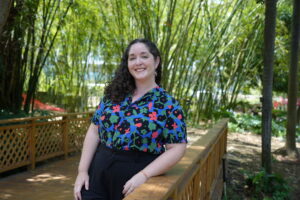
Display caption
Image: Annie Y. Saldaña, Credit: Courtesy Annie Y. Saldaña.
To learn more about Annie Y. Saldaña and her work with the Museo de Arte de Puerto Rico (MAPR) and the Creative Community Development Center, visit: www.mapr.org or follow her at: @annieysaldana Annie Y. Saldaña M.F.A. (@annieysaldana) • Instagram.
____________
Annie Y. Saldaña dirige la iniciativa Centro de Desarrollo para la Comunidad Creativa del Museo de Arte de Puerto Rico (MAPR)
Por Mackenzie Kwok
Este mes, el Museo de Arte de Puerto Rico (MAPR) anunció la iniciativa del Centro de Desarrollo para la Comunidad Creativa (CEDE). Dirigido por Annie Y. Saldaña, becaria de Leaders of Color 2023, CEDE ofrece formación profesional, programas de residencia para artistas y servicios de tutoría para apoyar a las comunidades creativas de Puerto Rico.
Hablamos con Saldaña sobre su trabajo y la iniciativa CEDE.
¿Puede contarnos un poco sobre los antecedentes del Centro de Desarrollo para la Comunidad Creativa y de su creación?
En 2006, el museo diseñó un programa llamado Programa de Asistencia al Artista. Durante muchos años, funcionó como un departamento único que apoyaba a los artistas visuales mediante el desarrollo de capacidades y la creación de oportunidades para visibilizar su trabajo. Este departamento ha estado paralizado durante los últimos años.
Cuando en abril llegó María C. Gaztambide, la nueva directora del museo, se reunió con todas las personas que trabajaban en el museo. Ella vio que yo trabajaba como coordinadora de educación para diferentes propuestas y proyectos, y que apoyaba a artistas fuera del museo coordinando exposiciones o escribiendo sobre las obras de los artistas. Me preguntó si quería reactivar el Programa de Asistencia al Artista y rediseñarlo. En lugar de apoyar únicamente a los artistas visuales mediante el desarrollo de capacidades, queríamos apoyar a los administradores de arte, curadores independientes, educadores y a todos los que forman parte del ecosistema creativo.

Display caption
Image: María C. Gaztambide and Annie Y. Saldaña. Credit: Courtesy Annie Y. Saldaña.
¿Por qué fue importante para usted?
Como artista y administradora de las artes, he visto la necesidad de este servicio en Puerto Rico. Tuve que abandonar la isla para aprovechar oportunidades de desarrollo profesional y capacitación. He visto a artistas y colegas irse de Puerto Rico para realizar distintos tipos de talleres y asistir a seminarios de desarrollo profesional. Este es un servicio que debe ofrecerse dentro del país, no todo el mundo puede permitirse tomar un vuelo al extranjero y pasar allí una semana para hacer cursos que le permitan desarrollar su carrera. Aunque tenemos algunos de estos recursos en la isla, no son muchos y no siempre son constantes o continuos.
Tras analizar los comentarios de la comunidad, también descubrimos que muchas de estas oportunidades de desarrollo profesional se ofrecían principalmente en el área metropolitana de San Juan. Uno de mis principales objetivos es colaborar con otras organizaciones artísticas y centros culturales de toda la isla para ampliar esta programación a todo Puerto Rico. Aunque la pandemia hizo más accesibles los programas internacionales, la mayoría están en inglés, por lo que también vemos la necesidad de ofrecer estos programas en nuestra lengua materna a fin de brindar accesibilidad e igualdad de oportunidades en la isla.
¿A qué nivel de artistas apunta?
El museo cuenta con un departamento de educación centrado en programas para niños de primaria a secundaria, familias y público en general. Mi departamento busca ampliar su presencia e influir en los creadores, desde los estudiantes universitarios de arte de cuarto año hasta los artistas emergentes, pasando por los creadores ya consolidados. Mi público ideal incluiría también a historiadores del arte, curadores, diseñadores de exposiciones y todos aquellos que puedan pertenecer a este ecosistema creativo, en particular, artistas con escasa representación de zonas rurales, artistas negros y queer, y artistas de la diáspora.
Me interesan mucho las relaciones intergeneracionales a través de programas de tutoría como una forma de intercambiar conocimientos y crear legados para los artistas reconocidos. No creo que los artistas mayores solo deban enseñar a los jóvenes, espero que los artistas jóvenes también puedan apoyar a los mayores en un intercambio mutuo de conocimientos.
¿Cómo define la industria creativa?
La industria creativa es un ecosistema completo, con el artista en el centro, más todas las personas que trabajan con artistas en algún momento —es decir, quienes los apoyan, como curadores de galerías, educadores, historiadores y diseñadores de exposiciones— todos los que tienen algún tipo de aporte creativo.
¿Tuvo algo que ver la beca Leaders of Color Fellowship con que usted dirigiera esta función o iniciativa?
Sin duda, la beca Leaders of Color Fellowship influyó para que la directora del museo viera las capacidades que yo tenía. Estar en el programa LOCF me permitió reconocer quién soy y qué puedo aportar. Me ayudó a darme cuenta de que, sí, soy capaz de ser líder.
Estar en contacto con otros becarios me dio el valor para ser un presentadora del Art Administrators of Network Convening en Chicago en noviembre de 2023. Esa experiencia, junto con la del Instituto de Liderazgo de NALAC del que fui parte en 2019, me motivó a presentar otra convención que se está llevando a cabo aquí en Puerto Rico, la Asociación de Educadores en Administración de las Artes.
¿Cómo imagina su puesto como líder del Centro de Desarrollo para la Comunidad Creativa?
Para mí, lo más importante es que los artistas se sientan visibilizados, reconocidos y escuchados. Veo mi puesto como un recurso para los artistas que estén bloqueados o para quienes necesiten algo de orientación o empuje para deshacerse del síndrome del impostor. Quiero estar a disposición de los artistas, acercarme a ellos con cariño y empatía, y servir de enlace entre el artista y mi departamento.

Display caption
Image: Annie Y. Saldaña, Credit: Courtesy Annie Y. Saldaña.
Para conocer más acerca de Annie Y. Saldaña y su trabajo con el Museo de Arte de Puerto Rico (MAPR) y el Centro de Desarrollo para la Comunidad Creativa, visite: www.mapr.org o sígala en sus redes sociales: @annieysaldana Annie Y. Saldaña M.F.A. (@annieysaldana) • Instagram.
